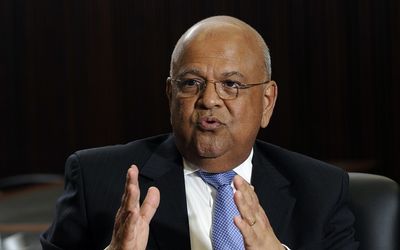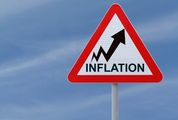A DAY or two before Statistics SA reported that the economy grew just 0.6% in the fourth quarter, Australia’s statistics agency reported exactly the same number for that economy’s fourth quarter.
The difference is that Australia, which like SA is rich in resources, has proved to be quite resilient in the face of China’s slowdown and the commodity market crash. That’s largely thanks to a rebalancing of activity from mining investment to the services sectors.
Australia’s 0.6% gross domestic product (GDP) growth for the fourth quarter was ahead of analysts expectations and brought its annual economic growth rate for last year to 3% — faster than the US or UK, and in line with South Korea.
By contrast, SA’s fourth-quarter number, the weakest since the global financial crisis, brought our economic growth rate for last year to just 1.3%. That’s in line with the estimate the Treasury pencilled into the budget Finance Minister Pravin Gordhan tabled last month.
Its forecast for this year is even worse, at 0.9%, and even that puts it among the optimists — some economists’ forecasts are even lower.
SA has now had two years of growth that is below its annual population growth rate of about 1.6%, so we are going rapidly backwards in terms of per capita incomes. Nor is the outlook for the next couple of years much better.
Agriculture was again a drag on growth in the fourth quarter — the sector has now recorded three quarters of double-digit decline. It could turn around once the weather turns, but the damage is done for much of this year.
Manufacturing was another fourth-quarter drag. It has shrunk to just 13% of the South African economy, which is now dominated by financial services (at almost 21%) and the government (which accounts for more than 17% of the economy). Finance and trade (including tourism) were the largest contributors to what growth there was last year. But mining and manufacturing, which are big employers and export earners, have languished, despite a weaker rand.
The long period of sub-par growth and low levels of investment have in themselves undermined SA’s capacity to raise its growth rate — the Reserve Bank last year estimated SA’s "potential" growth rate at just 1.8%, and has made the point that under these circumstances, it is no good looking to fiscal or monetary policy to provide the stimulus for growth. The problems are structural ones and they require structural solutions.
Weak growth is one of the main reasons SA is at risk of a downgrade to junk status. It is the reason unemployment and poverty rates are getting worse.
It has never been more important or urgent for SA’s policy makers to make it a priority to go for growth.
The December event, or 9/12, as some call it, does seem to have focused minds, and the series of meetings between business and government and the initiatives they have undertaken jointly do at least hold out some hope that there will be action taken to tackle the regulatory constraints and the policy incoherence that deters investors. There is some hope too that the business-government collaboration could yield action — even on a small scale — to encourage entrepreneurship and to open up key sectors such as electricity to "co-investment" with the private sector. Gordhan and business leaders are to set off on a roadshow this week to see investors in the US and UK in an unusual joint effort to try to boost confidence in SA and send the message that the country is open for business.
Confidence is important and the roadshow is worth a try, but investors will not be fooled by mere pronouncements. They — and indeed SA’s citizenry — are looking for execution. The government needs to start delivering on its commitments to tackling the regulatory and policy barriers that constrain investment and growth as well as on its promises to remedy the governance failings in state-owned enterprises, and the corruption and cronyism that hampers the performance of the state itself.
It has some extremely sharp and successful business leaders who are keen to work with it, as long as there is delivery from government’s side.
This is not an opportunity that SA can afford to waste.

Pravin Gordhan. Picture: RUSSELL ROBERTS
A DAY or two before Statistics SA reported that the economy grew just 0.6% in the fourth quarter, Australia’s statistics agency reported exactly the same number for that economy’s fourth quarter.
The difference is that Australia, which like SA is rich in resources, has proved to be quite resilient in the face of China’s slowdown and the commodity market crash. That’s largely thanks to a rebalancing of activity from mining investment to the services sectors.
Australia’s 0.6% gross domestic product (GDP) growth for the fourth quarter was ahead of analysts expectations and brought its annual economic growth rate for last year to 3% — faster than the US or UK, and in line with South Korea.
By contrast, SA’s fourth-quarter number, the weakest since the global financial crisis, brought our economic growth rate for last year to just 1.3%. That’s in line with the estimate the Treasury pencilled into the budget Finance Minister Pravin Gordhan tabled last month.
Its forecast for this year is even worse, at 0.9%, and even that puts it among the optimists — some economists’ forecasts are even lower.
SA has now had two years of growth that is below its annual population growth rate of about 1.6%, so we are going rapidly backwards in terms of per capita incomes. Nor is the outlook for the next couple of years much better.
Agriculture was again a drag on growth in the fourth quarter — the sector has now recorded three quarters of double-digit decline. It could turn around once the weather turns, but the damage is done for much of this year.
Manufacturing was another fourth-quarter drag. It has shrunk to just 13% of the South African economy, which is now dominated by financial services (at almost 21%) and the government (which accounts for more than 17% of the economy). Finance and trade (including tourism) were the largest contributors to what growth there was last year. But mining and manufacturing, which are big employers and export earners, have languished, despite a weaker rand.
The long period of sub-par growth and low levels of investment have in themselves undermined SA’s capacity to raise its growth rate — the Reserve Bank last year estimated SA’s "potential" growth rate at just 1.8%, and has made the point that under these circumstances, it is no good looking to fiscal or monetary policy to provide the stimulus for growth. The problems are structural ones and they require structural solutions.
Weak growth is one of the main reasons SA is at risk of a downgrade to junk status. It is the reason unemployment and poverty rates are getting worse.
It has never been more important or urgent for SA’s policy makers to make it a priority to go for growth.
The December event, or 9/12, as some call it, does seem to have focused minds, and the series of meetings between business and government and the initiatives they have undertaken jointly do at least hold out some hope that there will be action taken to tackle the regulatory constraints and the policy incoherence that deters investors. There is some hope too that the business-government collaboration could yield action — even on a small scale — to encourage entrepreneurship and to open up key sectors such as electricity to "co-investment" with the private sector. Gordhan and business leaders are to set off on a roadshow this week to see investors in the US and UK in an unusual joint effort to try to boost confidence in SA and send the message that the country is open for business.
Confidence is important and the roadshow is worth a try, but investors will not be fooled by mere pronouncements. They — and indeed SA’s citizenry — are looking for execution. The government needs to start delivering on its commitments to tackling the regulatory and policy barriers that constrain investment and growth as well as on its promises to remedy the governance failings in state-owned enterprises, and the corruption and cronyism that hampers the performance of the state itself.
It has some extremely sharp and successful business leaders who are keen to work with it, as long as there is delivery from government’s side.
This is not an opportunity that SA can afford to waste.





















Change: -0.47%
Change: -0.57%
Change: -1.76%
Change: -0.34%
Change: 0.02%
Data supplied by Profile Data
Change: -1.49%
Change: 0.08%
Change: -0.47%
Change: 0.00%
Change: -0.04%
Data supplied by Profile Data
Change: -0.14%
Change: 0.06%
Change: -0.06%
Change: -0.22%
Change: -0.35%
Data supplied by Profile Data
Change: -0.28%
Change: -1.15%
Change: -0.07%
Change: -1.21%
Change: -0.22%
Data supplied by Profile Data